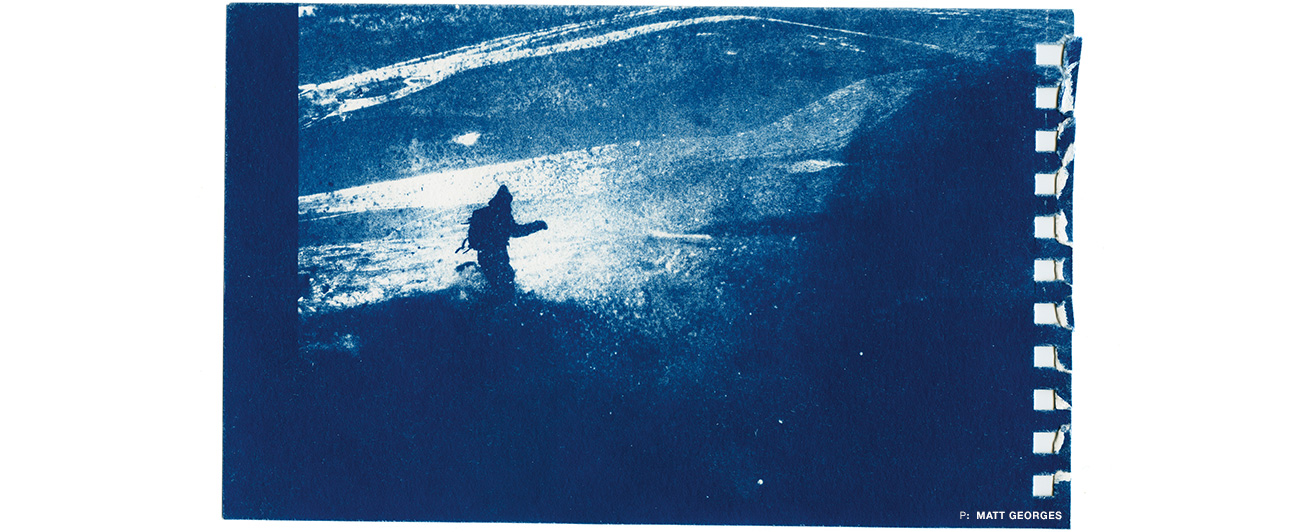Gallerie
Matt Georges’ Cyanotypes
Happy Accidents in White and Blue
When shooting snowboarding in the backcountry, we are overwhelmed by a pallet of blue and white. White powder, blue sky—the compositional possibilities are endless, the tones subtle variations on a simple theme. In a cyanotype print, which is also known as a “sunprint,” our subjects are rendered in a blue and white milieu through a process dating back to the 1840s—it’s the ancestor of the photocopier, of the photographic print in general. Once popular with architects and engineers to reproduce blueprints, it’s a low-cost, back-to-the-basics-approach, and it can also provide surprising results.
Since learning to shoot photos 15 years ago, I’ve been curious about different printing processes and have experimented with many methods of transferring negatives onto paper. When I discovered the cyanotype a few years ago, I found its simplicity engaging and surprising at the same time.
Simply put, it’s a contact printing process in which a photograph is transferred to paper—or even cotton, wool, and some nonporous surfaces—via a chemical process involving a mixture of the mildly photosensitive chemicals ferric ammonium citrate and potassium ferricyanide. These chemicals are applied to the paper sheet, which is then exposed to light in contact with the print surface…
Subscribe to start your collection of The Snowboarder’s Journal.
